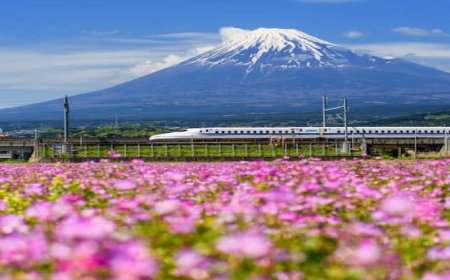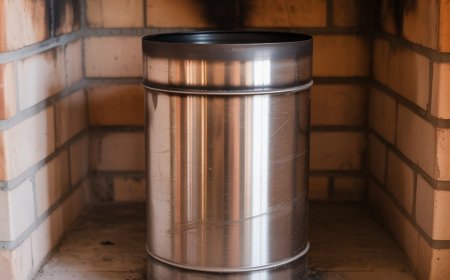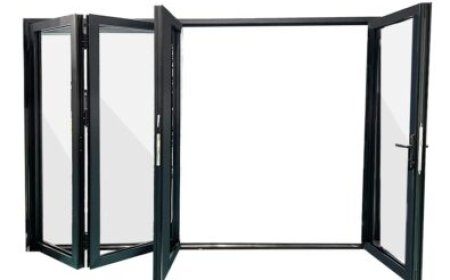Warehouse Lighting: How to Improve Efficiency and Safety in Your Warehouse
The importance of warehouse lighting for improving safety, productivity, and energy efficiency. Learn the best lighting solutions for your warehouse space

Introduction
Proper Warehouse Lighting is an often overlooked but essential aspect of any warehouse's functionality. Whether you're operating a small storage facility or a large distribution center, the right lighting plays a pivotal role in ensuring worker safety, increasing productivity, and reducing energy costs. This article will explore the importance of warehouse lighting and how you can improve your space with the right lighting solutions.
The Importance of Warehouse Lighting
-
Safety First
One of the primary reasons for investing in quality warehouse lighting is safety. Poor lighting can lead to accidents, including slips, trips, and falls, as well as injuries related to handling equipment and machinery. It is essential for workers to have clear visibility when operating forklifts or navigating aisles. With proper lighting, you ensure that employees can see hazards before they become a threat.
-
Increased Productivity
A well-lit warehouse can also enhance productivity. When employees can see clearly, they can work faster and more efficiently. With adequate lighting, they can quickly locate products, perform tasks more accurately, and reduce the time spent on rework. Whether its for picking orders or stocking shelves, visibility is crucial for effective performance.
-
Energy Efficiency
Investing in energy-efficient lighting can reduce operational costs. Modern lighting solutions, such as LED lighting, are designed to consume less power while providing better brightness than traditional lighting. Additionally, energy-efficient lighting reduces the need for frequent bulb replacements, saving on maintenance costs.
Types of Warehouse Lighting
-
LED Lighting
LED lights are the most popular lighting choice for modern warehouses. These lights are energy-efficient, durable, and offer excellent brightness levels. Unlike traditional lighting options such as fluorescent or incandescent bulbs, LEDs have a longer lifespan, reducing the frequency of replacements. LED lights also provide uniform illumination, which is crucial for preventing dark spots that can affect visibility and safety.
-
High-Intensity Discharge (HID) Lighting
HID lights are another option commonly used in large warehouses. They are known for their brightness and ability to cover large areas with high-intensity light. However, HID lights take longer to warm up and may not be as energy-efficient as LEDs. They can still be useful in certain areas of a warehouse, especially for outdoor or high-ceilinged spaces.
-
Fluorescent Lighting
Fluorescent lighting is often seen in warehouses, but it is less efficient than LED lighting. Although it offers good coverage and has a lower initial cost, fluorescent bulbs have a shorter lifespan and tend to flicker, which can be distracting to workers. For warehouses looking to improve energy efficiency and brightness, LED lighting is a superior alternative.
-
Task Lighting
Task lighting is often used in areas where workers need focused illumination, such as in offices, workbenches, or assembly lines within the warehouse. Task lighting can be installed above specific areas where employees perform precise tasks, ensuring they have enough light for accuracy and safety.
Key Considerations for Choosing the Right Lighting
-
Lighting Intensity
The intensity of light in a warehouse is essential for ensuring visibility. Warehouse lighting should be bright enough to allow workers to see clearly but not so bright that it causes discomfort or glare. The ideal intensity will depend on the type of tasks being performed in different parts of the warehouse. For example, higher-intensity lighting may be required in areas where detailed work is done, such as packing stations.
-
Lighting Distribution
The even distribution of light across the warehouse floor is important to minimize shadows and dark spots. Warehouse lighting should be designed to cover all areas, including aisles, workspaces, and storage areas, evenly. This will help create a safe working environment where workers can navigate easily without stumbling over poorly lit sections.
-
Color Temperature
Color temperature, measured in Kelvins (K), determines the warmth or coolness of light. In warehouses, a cooler light (between 4000K to 5000K) is often preferred because it mimics daylight and provides clear visibility. Warm light (below 3000K) may be suitable for break rooms or lounges but isnt ideal for areas where precision and focus are needed.
-
Lighting Controls and Dimming
To optimize energy use, many warehouses are now using lighting systems with smart controls. Dimming options or motion sensors can help conserve energy by adjusting lighting based on real-time needs. For example, lights in areas with minimal activity, such as storage areas, can be dimmed or turned off entirely when not in use. This helps reduce energy waste without compromising safety.
Energy-Efficient Solutions for Warehouse Lighting
Switching to energy-efficient lighting can save you money in the long run. LEDs are not only more energy-efficient than traditional lighting but they also produce less heat, which can help maintain a comfortable temperature inside the warehouse. Here are a few tips for improving energy efficiency:
-
Install Motion Sensors
Motion sensors automatically adjust lighting based on movement, ensuring lights are on only when needed. In warehouses where areas are occasionally unoccupied, motion sensors can save significant energy by turning off the lights when no one is around.
-
Use Natural Light
Where possible, take advantage of natural light. Installing skylights or large windows can reduce the need for artificial lighting during the day. Not only does this save on energy costs, but it also creates a more pleasant working environment.
-
Upgrade to Smart Lighting Systems
Smart lighting systems allow for better control and automation. These systems enable you to set lighting schedules, monitor energy usage, and adjust lighting remotely. They can also be programmed to automatically adjust light intensity based on the time of day or occupancy, further reducing energy consumption.
Maintaining Warehouse Lighting
To ensure your warehouse lighting remains functional and energy-efficient, regular maintenance is key. Here are a few maintenance tips:
-
Clean Fixtures Regularly
Dust and dirt can accumulate on light fixtures and reduce their brightness. Regular cleaning helps maintain optimal light levels and improves energy efficiency.
-
Inspect for Damaged Lights
Damaged or malfunctioning lights can create safety hazards and reduce visibility. Regularly inspect your warehouse lights to identify any issues and replace faulty bulbs as needed.
-
Schedule Regular Upgrades
As lighting technology improves, its a good idea to schedule regular upgrades. Older lighting systems may become less efficient over time, so replacing them with more energy-efficient options will keep your warehouse operating at its best.
Conclusion
Warehouse lighting is more than just a functional necessity its an investment in the safety, productivity, and efficiency of your business. By choosing the right type of lighting, optimizing energy consumption, and maintaining your lighting system, you can create a more productive and safe environment for your employees. Consider upgrading to energy-efficient LED systems and taking advantage of smart lighting solutions to ensure your warehouse stays well-lit and cost-effective for years to come.






































